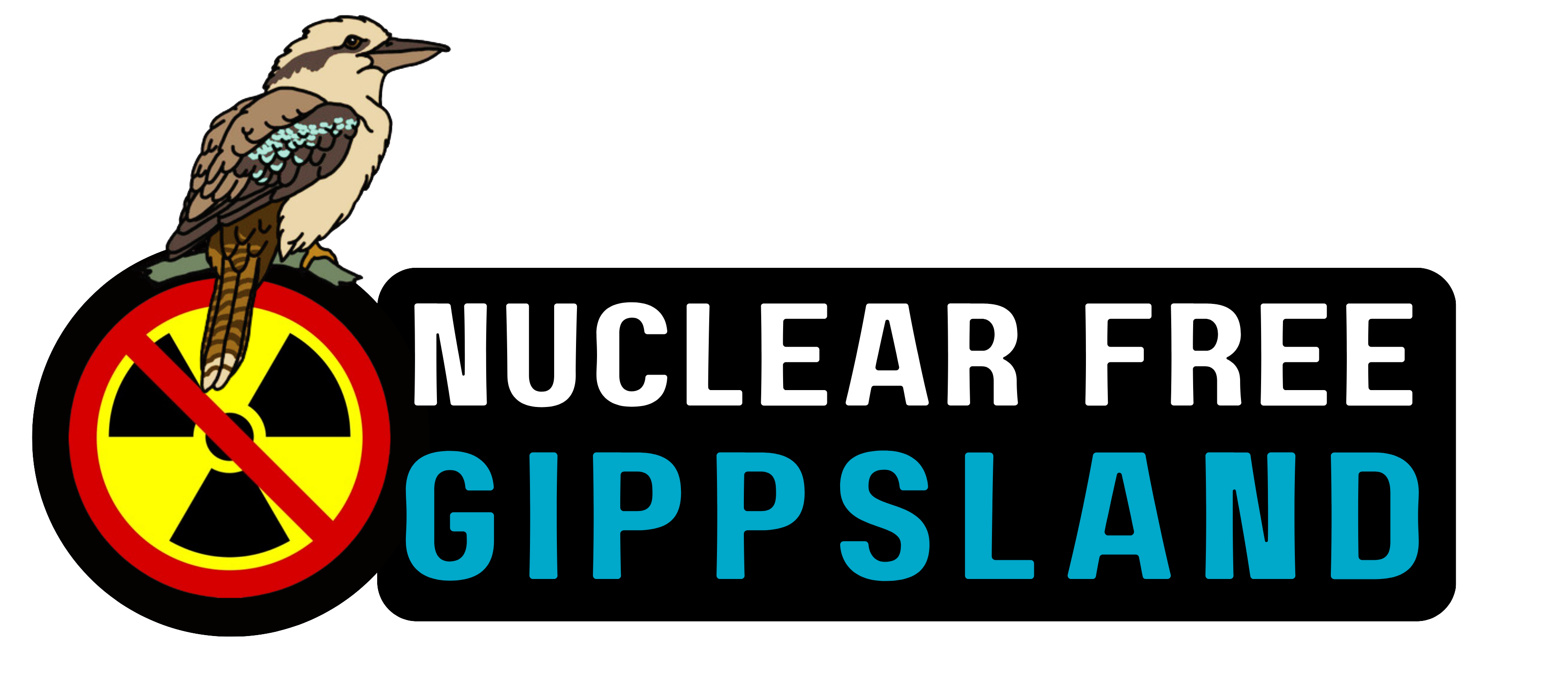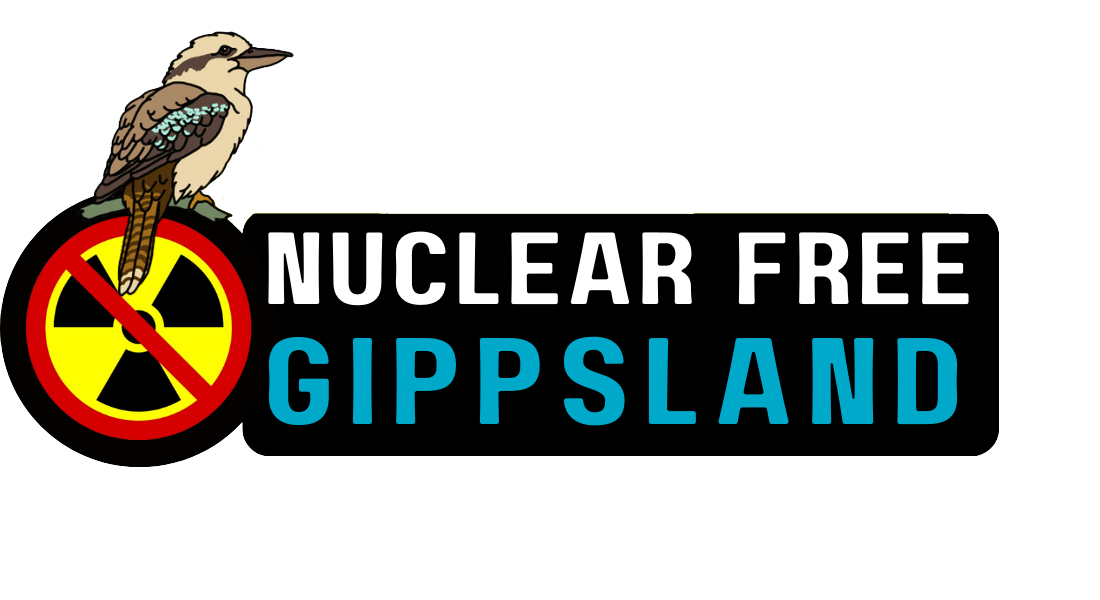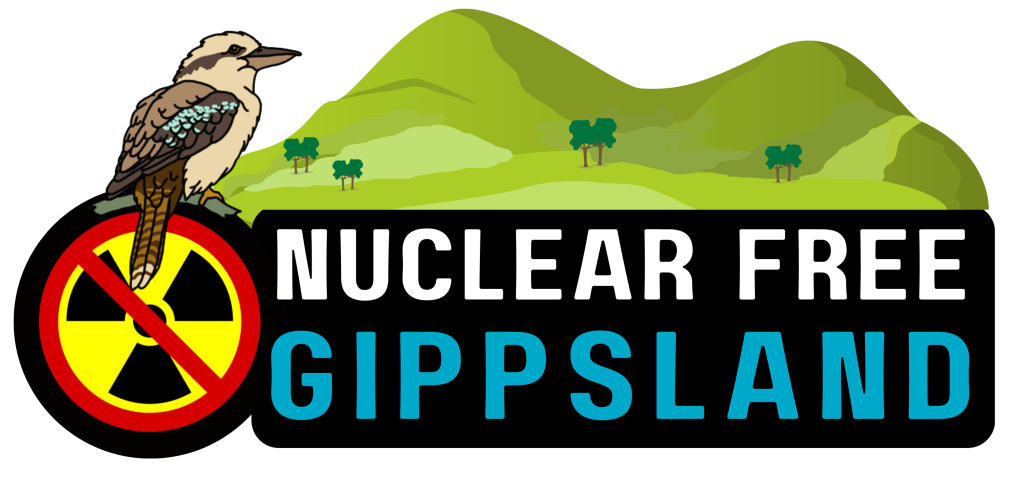NUCLEAR POWER: TOO COSTLY. TOO SLOW. TOO RISKY.
IS NUCLEAR POWER SAFE?
With the federal election looming, politicians and vested interests are pushing a proposal to overturn federal and state legislation banning nuclear power, and use taxpayers’ money to build nuclear reactors at seven sites across Australia.
One of these proposed sites is the Loy Yang power station, right here in Gippsland.
But we don’t need nuclear. Australia already gets over 40% of its national electricity from renewables, with some days over 60%! Renewables are the fastest growing energy sector, set to be 95% of the grid in Victoria by 2035, and providing us with the cheapest, most reliable source of energy.
Here in Gippsland we are at the centre of this shift, with over $40 billion of renewable energy projects planned over the next decade, providing over 8,000 jobs and allowing us to continue the proud tradition of powering Victoria.
But this scheme put forward by the Liberal National coalition gambles all of that, and brings with it all the risks that come with nuclear reactors and high-level radioactive waste which would be stored on site for at least the next 80 years.
Sign our petition to reject nuclear reactors and fight for clean, renewable energy and good, safe jobs. Let’s protect our community and create a better future.
Is nuclear power safe? Read more about why nuclear is not worth the risk >>
SIGN THE PETITION TO SHOW YOUR STAND AGAINST NUCLEAR POWER
Frequently Asked Questions
Will this provide us with secure “baseload power”?
No. In fact, it’s the opposite.
Those who champion nuclear admit that it will only ever make up a small to moderate fraction of our energy needs (and would need a lot of new gas to make up enough power).
Nuclear would also trap us into a rigid, centralised system, leading to more blackouts and less security.[1] [2] In Europe, nuclear power is frequently unreliable, with outages reducing supply by 44-77% during peak times.[5]
Baseload power in Australia is being made redundant by renewables and energy storage. The shift to a renewable-powered, decentralised energy system is already providing households and communities with greater energy security and more affordable electricity.
Australia already gets over 40% of its national electricity from renewables, with some days over 60%! South Australia is over 70% renewable while the ACT and Tasmania are fully renewably powered. Renewables are clearly and constantly the fastest growing energy sector in Australia.
By harnessing abundant energy from sources like wind and solar – including the rooftop solar on over 4 million Australian homes – backed up when we need it by large batteries and hydro power, we can ensure a more resilient (and much cheaper!) power supply. [ 3]
It speaks volumes that AGL (owner of Loy Yang, the site earmarked by the coalition to house nuclear reactors) have ruled nuclear out.
AGL’s Chief Executive Officer Damien Nicks confirmed that the coal fired power station would be shut down years before nuclear would be built and said that AGL were “not entertaining the idea” of coal plant extensions because it would lead to higher prices for consumers and more sudden outages.
AGL are instead getting on with the job of transitioning Loy Yang into a renewable energy hub, featuring grid scale batteries. [ 4]
[ 1] Climate Council | ‘Lights Out – Ageing Coal and Summer Blackouts’
[ 2] Grattan Institute | ‘Peter Dutton’s nuclear plan would mean at least 12 more years of coal’
[ 3] Grattan Institute | ‘Why major power blackouts are unlikely’
[4] The Age | Coal plant closures can’t wait for nuclear power, warns AGL
How much water does nuclear use?
Too much.
Nuclear reactors require a large, consistent supply of water – between 20% to 80% more than coal according to analysis by the International Atomic Energy Agency. This becomes a problem as climate change causes more extreme heat and droughts which increase the risk of power failures and add pressure to our rivers and lakes, agriculture and urban water supply. [1]
Water scarcity has been a problem for nuclear reactors in other jurisdictions. In France, nuclear reactors were turned off or down because water in inland rivers became scarce, and/or became too warm to cool the reactor. This raises the question of what happens to the power system and other water users when Gippsland is in drought. [2]
Local farmers and businesses have expressed concern about nuclear reactors taking water from them and the negative public perception on Gippsland’s ‘clean and green’ food,fibre and tourism sectors.
Where this enormous amount of water will come from remains the ‘elephant in the room’. Nationals leader, David Littleproud says they intend to use the water allocations that are currently used by the power stations, however AGL (owners of Loy Yang) will require this water to rehabilitate Loy Yang open cut coal mine and are already progressing their plan to create pit lakes.
This complex task of rehabilitating our mines may take decades and brings with it its own set of challenges, such as land subsidence and ground movement – begging the question – is building a nuclear reactor next to an unstable mine and on top of a major earthquake fault line really a good idea?
The Mine Land Rehabilitation Authority has suggested that “currently housing a nuclear facility at Loy Yang would be difficult”. You can read their complete statement here. [3]
[1] Friends of the Earth | ‘Nuclear power and water consumption’
[2] Balkan Green Energy News | Climate change, water scarcity jeopardizing French nuclear fleet
[3] Mine Land Rehabilitation Authority | Transitioning to cleaner energy sources
What about the jobs and cost benefits of nuclear?
When it comes to jobs, nuclear is a bad bet – and an unnecessary one.
The shift to renewables is already driving significant job growth and has the potential to create even more jobs than currently exist in Australia’s fossil fuel export industries. [1]
Across Gippsland, the planned investment over the next decade in renewable energy projects is over $40 billion, which positions us well to continue the proud tradition of powering Victoria.[2]
By generating investor uncertainty and delaying the transition to renewables, the attempt to build a nuclear power industry will decrease the amount of energy jobs in the short-term, and likely deliver zero jobs in the long-term. Chasing a nuclear unicorn gambles good jobs in clean power.
When it comes to the taxpayer, we’ll do even worse off. The CSIRO has consistently measured nuclear as the most expensive energy option and recent reactors in the US and Europe have cost between $A 20 and 40 billion each. [3]
But construction costs are only part of the nuclear cost and don’t take into account the cost of enriched uranium fuel rods, managing radioactive waste for thousands of years, costs for regular maintenance, refurbishment after 30 years and the massive cost of decommissioning at the end of life. Those with local expertise in energy and engineering have estimated the costs and timelines would continue to blowout. [4]
Does it really stack up? Nationals Senator, Matt Canavan doesn’t think so, admitting that nuclear “ain’t the cheapest form of power”, going on to say that his coalition is “latching onto it [nuclear] as a silver bullet … that fixes a political issue”. [5]
[2] Invest Gippsland | ‘Energy and Resources’
[3] CSIRO GenCost 2024-25 Report
[4] McKell Institute ‘Explainer | ‘Why the evidence suggests nuclear won’t work for Australia’
[5] ABC News | ‘Nationals senator claims Coalition introduced nuclear as a political fix’
[6] South Gippsland | Renewable Energy Impact and Readiness Report
How will safety and waste be managed?
Poorly
Under the proposal put forward by the Liberal National coalition, large volumes of radioactive waste, including high level wastes, would be stored on site for at least the next 80-100 years. There has been no detail on how the storage and transport of this waste will be managed or what this might cost. Nuclear waste management is a growing and unresolved global problem, because high-level radioactive waste lasts for many thousands of years.[1]
Radioactive waste is handing down potential health and security risks to future generations, increasing the threat of targeted attacks like we have seen in Iraq and Ukraine. The Australian Strategic Policy Institute, a national security publication, says of the nuclear reactors proposal, “The policy would perpetuate Australia’s concentration of electricity generation and worsen our vulnerability to air and missile attack.” [2]
While the frequency of nuclear reactor accidents is low, history has shown that nuclear accidents – such as those at Three Mile Island, Chernobyl and Fukushima – can have catastrophic and continuing consequences.[3]
As Gippslanders’ we are no strangers to industrial accidents, with the 1998 Esso Longford explosion and 2014 Hazelwood mine fire, which burned out of control for 45 days. While the risk may be slim, the stakes of such a disaster – with potential for severe radiation exposure, cancer and long-lasting environmental impacts – are very high. Particularly for those living within the extended fallout zone.
[1] Greenpeace France | ‘The Global Crisis of Nuclear Waste
[3] CBS News |‘Japanese woman breaks silence on Fukushima-related cancer’
How safe is it to live near a nuclear reactor?
Is Nuclear Power Safe?
Nuclear reactors are harmful for nearby communities and workers.
Medical professionals and public health experts have raised significant concerns about the health risks posed by nuclear energy, emphasizing that there is no “safe” level of radiation exposure.
Research has shown that living within 30 kilometers of a nuclear reactor increases the risk of cancer by 5%, with thyroid cancer rates rising by 14% and leukemia by 9%. Furthermore, a long-term study of over 300,000 nuclear workers across France, the UK, and the US found elevated rates of cancer, heart attacks, and strokes, suggesting that even low doses of radiation carry substantial health risks.[1]
No matter which type of reactor is built they all carry with them significant levels of risk. [2]
Dr. Margaret Beavis, a former GP and the vice president of the Medical Association for the Prevention of War stated appeared as an expert witness at the Parliamentary Inquiry into Nuclear, referenced the findings of a comprehensive study which measured the impact of low-dose radiation exposure on 300,000 people working in the nuclear industry over a 30-year period.
“We know that children, particularly fetuses in utero, are very, very susceptible to radiation, and there’s been studies [that were] initially picked up with lymphoma and leukemia around the Sellafield nuclear power plant [in the UK]”, she said.
“It [the study] showed that the risk of leukemia more than doubled for children living within five kilometres of a nuclear power plant, and elevated risk extended beyond 50 kilometres from that plant.”
[1] The Canberra Times | Marion Rae ‘Doctors fear health fallout from nuclear energy plans’
[2] Independent Australia | Helen Caldicott ‘The dangers of nuclear power in Australia’
[3] The Epoch Times | Children Living Near Nuclear Plants Face Double the Risk of Leukemia: Doctors
How will my rooftop solar be affected by nuclear?
The Coalition’s proposed nuclear power-led future is one where your home solar will be switched off to make way for nuclear energy, raising energy bills and locking in polluting coal and gas for decades to come.[1]
The addition of 13 GW of nuclear capacity would force out substantial amounts of cheap, renewable energy from the grid, “shutting off” millions of rooftop solar systems. This is because the business case for nuclear requires that nuclear reactors run almost continuously, so the operator would have to be guaranteed no competition from renewables.
Solar owners already face being switched off from their inverters if there is too much solar in the grid. For many households, it would mean not just stopping home solar power from being fed into the grid, but stopping it from being used in your home too.
The government would be switching off your rooftop solar, forcing solar owners to buy more expensive nuclear electricity from the grid. That will cut rooftop solar savings for 4 million Australian homes, plus anyone who wants home solar in the future.[2]
Is it really fair that Australian families who invested in solar panels in good faith would not be able to use them?


